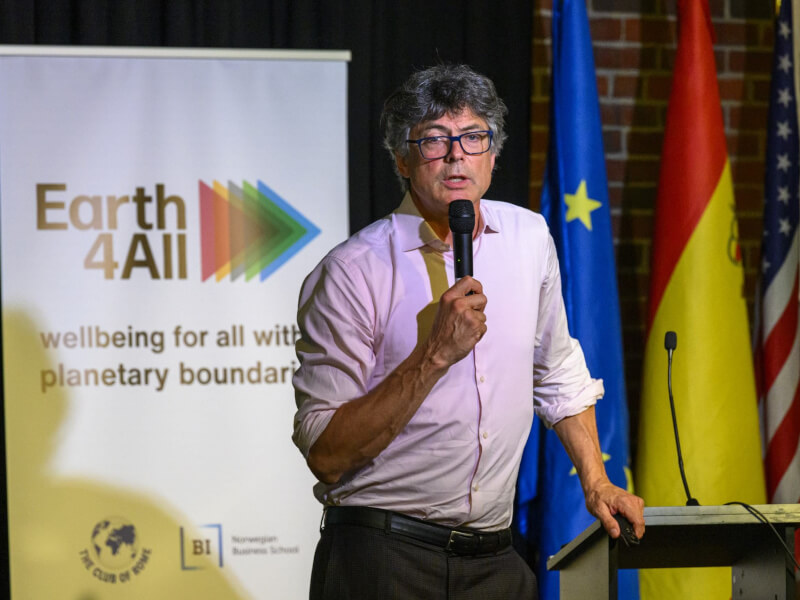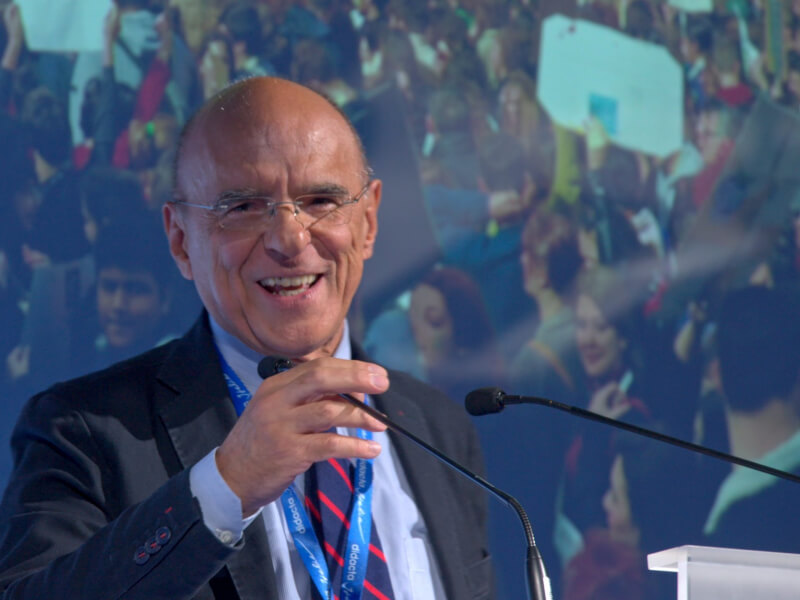12 March 2024 – The Club of Rome is known for its influential reports on environmental challenges and sustainable development. Could you share how you first became involved with the organisation?
Back in the 1990s, I got involved in eco-philosophy through a Norwegian philosopher called Arne Næss, who founded Deep Ecology. I also read the book Beyond the Limits by Dennis Meadows and Jørgen Randers. It was through Jørgen Randers that I became involved with The Club of Rome. First through the report Transformation is Feasible in 2018, which led to the Earth4All project, and then in 2022 I became a member of The Club of Rome.
How do you believe the understanding of psychology can help facilitate effective climate action?
To accelerate change it is now even more important to research and utilise people’s response to climate facts. That is the role of psychology. We need to understand not only climate drivers -such as CO2 and melting ice, but how people feel about climate risk and how it registers in people’s brains. It is imperative to generate bottom-up support for climate policies, and better interventions to change behaviors among individuals.
Your book, What We Think About When We Try Not To Think About Global Warming, has received critical acclaim for its insightful approach to communication and psychology surrounding climate change. Could you share some key takeaways from the book, particularly in terms of motivating action and overcoming denial?
The book explores the climate paradox that even if we know more about how serious the climate crisis is, that does not translate into increased concern and behavioral change. Key barriers to action are psychological distance, doom, dissonance, and identity. We can overcome the barriers: reducing psychological distance by making it more social. It’s about friends, neighbours and colleagues here and now – not about the year 2050. We can use better storytelling to shift from doom to possibility. Nudging behaviors can make it easier for people to make climate-friendly choices. Finally we can address identity by tailoring the climate story to match with the values and identities of the people listening.
In your role as the director of the Centre for Sustainability and Energy, what are some initiatives or projects that you have been involved in, and what impact have they had on promoting sustainable practices and addressing climate change?
The centre has done research on the Norwegian petroleum sector to shift from oil and gas to offshore wind and green energy exports. We have also looked at public green procurement to promote green and inclusive supply chains. We explore accounting systems and climate accounting for businesses and have provided education on sustainability to business executives and students at the Norwegian Business School.
Could you share some insights from your TED Talk titled “How to transform apocalypse fatigue into action on global warming” and what strategies you believe are effective in motivating individuals to take steps towards climate solutions?
Once we recognise the barriers – the distance, the doom, the dissonance and identity – we can use psychology to understand how to avoid them. We should not try to knock the barriers down because that just creates resistance, however we can guide or seduce people around them. The way to make distance go away is to make it social. If I hear my brother or my sister or my colleague speaking about biking to work rather than driving the car or that they have solar panels on the roof rather than buying from the grid, then it suddenly becomes near and it feels personal to me. If I’m at dinner and somebody speaks about how they feel bad about eating grain-fed red meat because it is bad for the environment, then it certainly feels socially relevant and urgent. Our brains are social. Humans are flock animals and we’re always scanning what other people are doing. When this starts to spread, it is called a shift of social norms. Social norms can spread like ripples in the water.
We also need better storytelling in order to get out of doom. In both The Limits to Growth, and Earth for All, some of the scenarios – like the Giant Leap – show how it is possible to change society around. I would like to see that we shift from the dominant story of doom to more engaging stories of possibilities.
Your recent book, Tomorrow’s Economy, explores the future of the global economy in the context of sustainability. Could you provide an overview of ideas presented in the book and how you envision the transition towards a healthy economy?
I believe that today’s economy is incredibly wasteful, with 90% of materials extracted from nature ending up as pollution or garbage after just one or zero times use. By implementing green design solutions in sectors like construction, transportation and food, we can reduce material use by 90% while still maintaining our quality of life and even increasing incomes. This shift towards green growth involves transitioning to sustainable practices such as solar energy, electric transport and plant-based foods.
I am convinced that we need to create more value with fewer materials taken from Mother earth, benefiting both the environment and people in low-income countries. In order to ensure inclusive growth, it is crucial that we measure and improve both resource productivity and social productivity, reducing inequality and promoting fairer distribution of income. A system change towards healthy growth involves consistently improving resource and social productivity measurably and transparently by more than 5% per year. This provides a compass for assessing and guiding economic progress towards a more sustainable and equitable future.
What strategies or approaches can The Club of Rome use to effectively foster collaborations between governments, businesses, and civil society to drive collective action towards a sustainable future?
The Club of Rome can help disseminate new framings and new ways of understanding the system and the economy. The organisation should tap into its extensive networks to get its story into positions of power and speak to high-level decision-makers.
How does sustainability look for you in 10 years?
In 10 years, the renewable share of energy will be so high that there will be no more investment in new fossil infrastructure. The decade between 2020-2030 will see more rapid income growth in low-income countries, with high green growth rates until most countries are above $10,000 per year per person income. That can result in a much lower material footprint than today. Cities all over the world will forbid the use of fossil fueled cars and fossil fuels in the city. There will be a movement of people working for drinkable rivers, allowing people to start thinking about drinking from the river again or swimming in them. However, it will take more than a decade to ensure real sustainability, it’s a many decades endeavor to redesign the economy, so it is also important not to burn out by rushing too much. “The Times are Urgent: let’s slow down”, as Bayo Akomolafe puts it.






